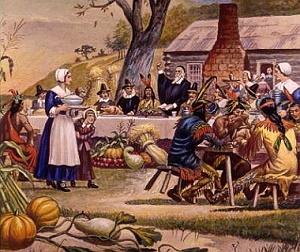 Dear readers, Catholic Online was de-platformed by Shopify for our pro-life beliefs. They shut down our Catholic Online, Catholic Online School, Prayer Candles, and Catholic Online Learning Resources—essential faith tools serving over 1.4 million students and millions of families worldwide. Our founders, now in their 70's, just gave their entire life savings to protect this mission. But fewer than 2% of readers donate. If everyone gave just $5, the cost of a coffee, we could rebuild stronger and keep Catholic education free for all. Stand with us in faith. Thank you. Help Now >
Dear readers, Catholic Online was de-platformed by Shopify for our pro-life beliefs. They shut down our Catholic Online, Catholic Online School, Prayer Candles, and Catholic Online Learning Resources—essential faith tools serving over 1.4 million students and millions of families worldwide. Our founders, now in their 70's, just gave their entire life savings to protect this mission. But fewer than 2% of readers donate. If everyone gave just $5, the cost of a coffee, we could rebuild stronger and keep Catholic education free for all. Stand with us in faith. Thank you. Help Now >
Culture, Its Delights and Distractions: On Catholic Kitsch
FREE Catholic Classes
As someone who has thousands of Catholic "friends" on Facebook, I'm reminded almost daily of the fondness many ardent Catholics have for images of Christ and Mary, and other religious subjects, that fall under the species of art called kitsch. In fact, it's my observation that most of the art in America considered Catholic is kitsch. Thus, I know I am treading on thin ice by speaking critically of images that millions of Catholics hold dear.
Highlights
Catholic Online (https://www.catholic.org)
1/7/2014 (1 decade ago)
Published in U.S.
Keywords: culture, faith and culture, Deal W. Hudson, Kitsch, Catholic Kitsch, art, Catholic art, faith and culture, Deal W. Hudson
WASHINGTON,DC (Catholic Online) - As someone who has thousands of Catholic "friends" on Facebook, I'm reminded almost daily of the fondness many ardent Catholics have for images of Christ and Mary, and other religious subjects, that fall under the species of art called kitsch. In fact, it's my observation that most of the art in America considered Catholic is kitsch. Thus, I know I am treading on thin ice by speaking critically of images that millions of Catholics hold dear.
It's quite possible, however, that someone reading this may not know that the term kitsch implies criticism, a judgement about an image's value as a work of art. The German word kitsch came into English usage a century ago to describe inexpensive, mass-produced art work marked by sentimentality, high emotion, lack of reflection, and self-congratulation. Look at the art posted by Catholics on Facebook and other Internet blogs. Look at the art hanging in most Catholic parishes, rectories, chanceries, schools, colleges, and hospitals - almost all of it qualifies as kitsch.
Perhaps you have to be a cradle Catholic to appreciate it, to associate it with your childhood in some way, your parents' or grandparents' home, your first parish or school. But sentimental association does not make a poorly made image into a valuable work of art, especially art that is intended to glorify God or inspire its viewer to prayer and holiness. Am I the only one left cold, and turned off, by these images? Am I the only one who wonders why Catholics are so moved by these images they would go to the trouble of displaying them publicly?
I'm not talking about those who post digital copies of the master painters of the sacred such as Giotto, Raphael, Da Vinci, Michelangelo, Rubens, Mantegna, Botticelli, Fra Angelico, Van Eyck, Velasquez, the Pre-Raphaelite John Collinson, or Rouault. I'm talking about images of Christ and Mary that anyone familiar with Catholicism can almost predict will be hanging in a parish narthex, a pastor's office, a chancery reception area, or the home of a pious Catholic. Why? Because these images are seen so often that you expect them to be displayed as a kind of symbolic guarantor of being genuinely Catholic.
The Czech writer Milan Kundera calls self-congratulation, the most important aspect of kitsch, as the "second tear": "Kitsch causes two tears to flow in quick succession. The first tear says: How nice to see the children running in the grass! The second tear says: How nice to be moved, together with all mankind, by children running in the grass! It is the second tear which makes kitsch, kitsch."
Catholics are particularly sensitive to symbols and are particularly prone to sentimentality regarding the Church. One follows naturally from belonging to a faith that worships liturgically and has long relied on paintings, statues, and stained glass to instruct the faithful in the basic narrative of Scripture and the saints of the Church. The other from a Church in the US that has been shaped and infused by generation after generation of immigrants from the UK, Europe, South America, Central America, and Mexico - all living in ethnic communities for several generations before dispersing into the larger culture. A shared bond holding those communities together was familiar sacred images that provoked immediate emotional recognition. In fact, the Catholic kitsch in this country can be subdivided by ethnic legacy.
What's wrong with Catholic kitsch? Nothing would be wrong with it, per se, if it wasn't treated as genuine art, worthy of our admiration, worthy of adorning church walls, worthy of the art to be displayed as representing the Catholic faith. The German writer and Catholic convert, Herman Broch, considered kitsch as a form of deception. When kitsch supplies instant comfort, it denies the complexity of what is being represented: Broch calls it a "counterfeit image" allowing someone to see only what they want to see. Kitsch obscures reality.
Broch went so far as to compare the difference between art and kitsch to the distinction between good and evil: "The Anti-Christ looks like Christ, acts and speaks like Christ, but is all the same Lucifer." Or to put it another way: Catholic kitsch may look like Christ and his Mother Mary, but it's much less than either. Why? Because kitsch supplies an easy, feel-good experience in place of what genuine, sacred art provides - a challenge, eliciting a deeper understanding, a sense of awe at the mystery of what can't be known in this lifetime. Catholic kitsch presents its figures as easily digested, non-threatening, and makes no demand on the mind or the imagination. Kitsch glorifies the superficial and treats sentimentality as holy awe.
I'm not suggesting that all Catholic kitsch be taken down from the walls and destroyed. Rather, I hope Catholics will recognize it as kitsch and stop giving it the respect it doesn't deserve.
Summary:
1. Kitsch is inexpensive, mass-produced art work marked by sentimentality, high emotion, lack of reflection, and self-congratulation.
2. Catholic kitsch is the most common form of sacred art found in Catholic homes and Catholic institutions across America.
3. Kitsch reaffirms superficiality and sentimentality, retarding the deeper insights into our faith that are elicited by the master works of sacred art.
© Deal W. Hudson, Ph.D
-----
Deal W. Hudson is president of the Morley Institute of Church and Culture, Senior Editor at Catholic Online, and former publisher and editor of Crisis Magazine.This column and subsequent contributions are an excerpt from a forthcoming book. Dr. Hudson's new radio show, Church and Culture, will begin broadcasting in February on the Ave Maria Radio Network.
---
'Help Give every Student and Teacher FREE resources for a world-class Moral Catholic Education'
Copyright 2021 - Distributed by Catholic Online
Join the Movement
When you sign up below, you don't just join an email list - you're joining an entire movement for Free world class Catholic education.
-

-
Mysteries of the Rosary
-
St. Faustina Kowalska
-
Litany of the Blessed Virgin Mary
-
Saint of the Day for Wednesday, Oct 4th, 2023
-
Popular Saints
-
St. Francis of Assisi
-
Bible
-
Female / Women Saints
-
7 Morning Prayers you need to get your day started with God
-
Litany of the Blessed Virgin Mary
Daily Catholic
 Daily Readings for Friday, November 29, 2024
Daily Readings for Friday, November 29, 2024 St. Saturninus: Saint of the Day for Friday, November 29, 2024
St. Saturninus: Saint of the Day for Friday, November 29, 2024 Psalm 31 (the Second Penitential Psalm): Prayer of the Day for Friday, November 29, 2024
Psalm 31 (the Second Penitential Psalm): Prayer of the Day for Friday, November 29, 2024- Daily Readings for Thursday, November 28, 2024
- St. Catherine Laboure: Saint of the Day for Thursday, November 28, 2024
- The Salve Regina (Hail Holy Queen): Prayer of the Day for Thursday, November 28, 2024
![]()
Copyright 2024 Catholic Online. All materials contained on this site, whether written, audible or visual are the exclusive property of Catholic Online and are protected under U.S. and International copyright laws, © Copyright 2024 Catholic Online. Any unauthorized use, without prior written consent of Catholic Online is strictly forbidden and prohibited.
Catholic Online is a Project of Your Catholic Voice Foundation, a Not-for-Profit Corporation. Your Catholic Voice Foundation has been granted a recognition of tax exemption under Section 501(c)(3) of the Internal Revenue Code. Federal Tax Identification Number: 81-0596847. Your gift is tax-deductible as allowed by law.







 Daily Readings for Friday, November 29, 2024
Daily Readings for Friday, November 29, 2024 St. Saturninus: Saint of the Day for Friday, November 29, 2024
St. Saturninus: Saint of the Day for Friday, November 29, 2024 Psalm 31 (the Second Penitential Psalm): Prayer of the Day for Friday, November 29, 2024
Psalm 31 (the Second Penitential Psalm): Prayer of the Day for Friday, November 29, 2024

